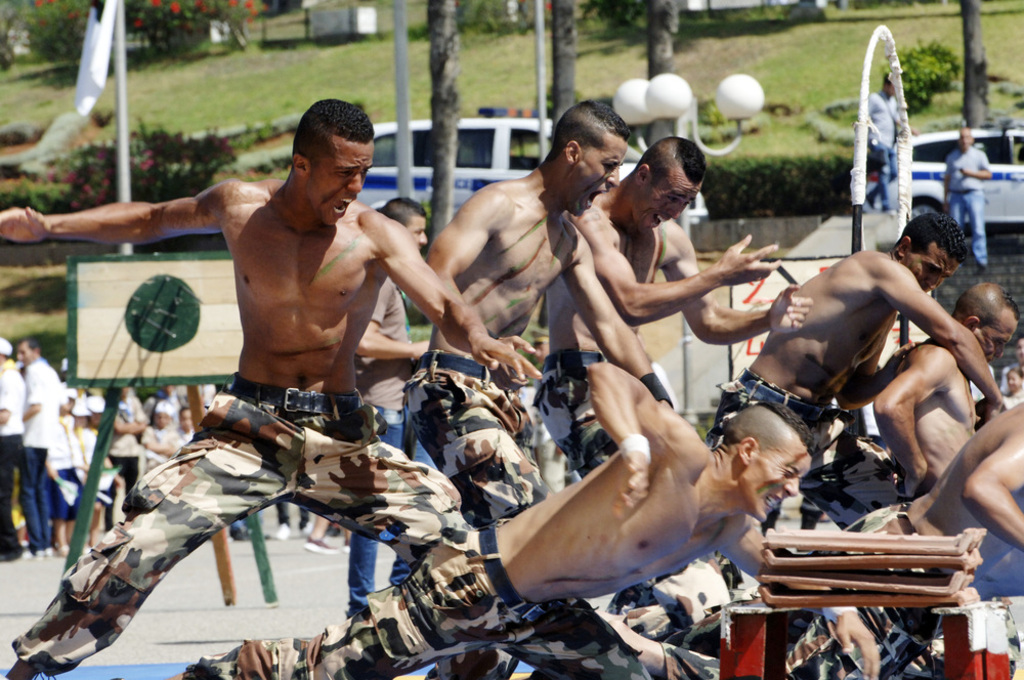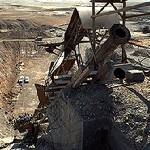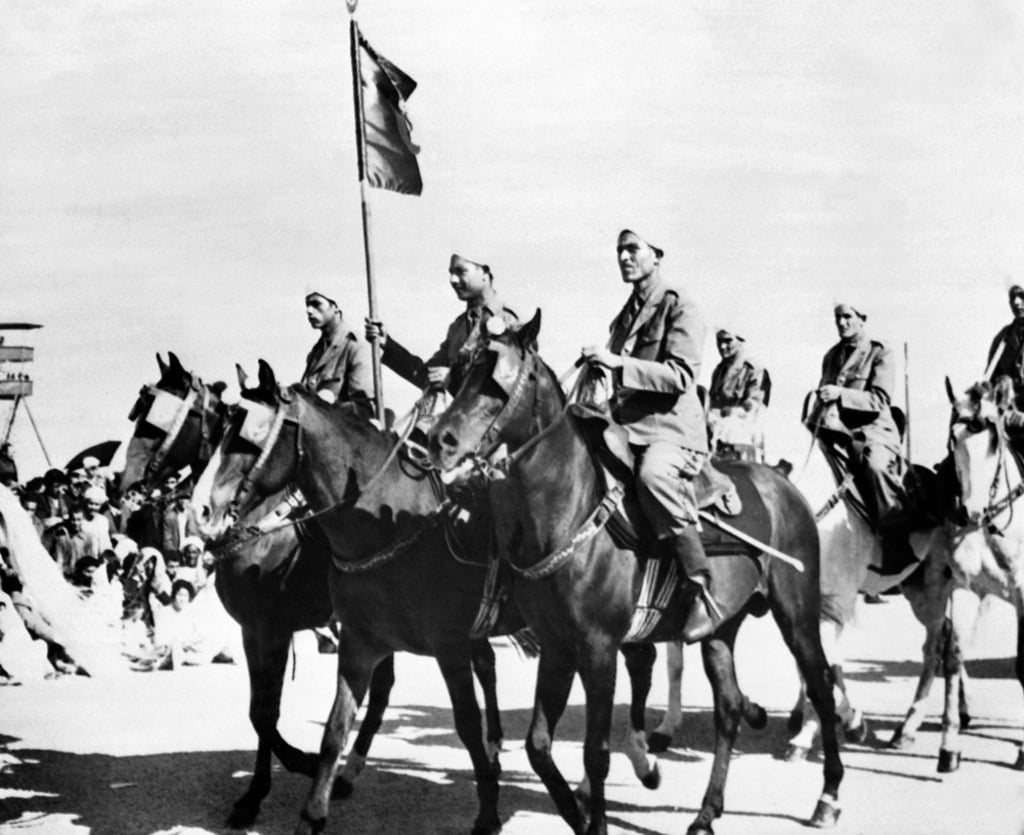
Algeria’s shadowy ruling elite is largely composed of two highly fragmented factions: the military dominated by the notorious Department of Intelligence and Security (DRS) and the government coalition led by two political parties; the National Democratic Rally (RND) and the former unity party National Liberation Front (FLN) headed by President Abdelaziz Bouteflika. His allies in the state bureaucracy, the military and the FLN are believed to have successfully sidelined the DRS’s long-established leadership after the 2013 In Aménas hostage crisis at a remote gas facility in the Sahara Desert near the Libyan border.
The background of the raid by jihadists, which left at least 38 civilians and 29 militants dead, has never been fully disclosed. However, the hostage crisis and the DRS’s controversial counter-assault on the attackers had immediate repercussions for the ongoing power struggle within the country’s regime and set the course for another dubious shift of leadership which occurred – once again – behind closed doors. Bouteflika’s allies set about stripping the DRS – known during the civil war in the 1990s for its ruthless anti-terror operations – of its authority. However, it remains unclear if this latest shift of power will contain the military’s ambition to play a leading role in Algerian politics.
Algeria’s Bipolar Autocracy
The fragmentation of the regime into a political and military wing has its roots in Algeria’s war of independence in the 1950s. The FNL’s political leaders were either exiled in Cairo or imprisoned in France, while the movement’s armed guerrilla operated inside French Algeria. In 1957, the FLN‘s military wing, the National Liberation Army (ALN), was soundly beaten after a relentless counter-insurgency campaign by the French military, a campaign that also forced the ALN into exile.
In 1960, Colonel Houari Boumédiène took over the ‘border army’, the FLN troops based in Tunisia and Morocco. Shortly after France announced its complete withdrawal from Algeria, Boumédiène sidelined the FLN‘s exiled leaders in Cairo and formed a strategic alliance with Ahmed Ben Bella, a leading FLN politician.

Immediately after the French pullout in 1962, Ben Bella and Boumédiène’s ALN marched into the capital Algiers and effectively took over control of the newly independent state. Ben Bella became Algeria’s first president and Boumédiène was appointed vice-president and minister of defence. The ALN was subsequently transformed into the country’s military, the People’s National Army (ANP).
During Ben Bella’s presidency, the army evolved into a major political player and gradually expanded its power. This was even before Boumédiène staged a military coup in 1965, ousting Ben Bella and further strengthening the military’s grip on state institutions and the FLN. At the time, Boumédiène had already established an informal power-sharing agreement between the ANP and the FLN, a status quo the regime has largely maintained to this day.
Ever since, the military and the FLN have been trapped in an almost constant tug of war over control of the country’s political agenda and privileged access to the vast oil and gas reserves. As a result, conflicts are common and can turn violent, as the past few decades have shown. To some extent, the regime’s two major wings pursue the same objectives, namely securing privileges and extensive control over oil and gas revenues. Yet in times of declining revenues or power vacuums, the struggle for control increases.
Algerian Civil War
Boumédiène’s death in 1978 created such a power vacuum, paralyzing the country for years. The ANP’s dominant role within the regime was challenged in the 1980s when the massive drop in oil and gas revenues caused a political crisis, followed by a p
opular uprising in 1988. The ensuing democratic transition led to the rise of a radical Islamist party, the Islamic Salvation Front (FIS), and its victory in the first round of the 1991 parliamentary elections. Shortly before the second round of the vote in January 1992, the army staged a military coup, banned the FIS and regained its control over Algeria’s government and the presidency. The radical wing of the FIS went underground and started a guerrilla war against the state.
An estimated 150,000 people were killed during the civil war that followed the 1992 military take-over. The FLN was effectively sidelined by the army leadership while the military became the uncontested leading faction of the regime. This was until Liamine Zéroual, who was appointed president in 1994, paved the way for the return of political parties into Algerian politics. In 1997, his newly established RND party won the parliamentary elections and formed a coalition with the FLN. The restoration of the power-sharing agreement between the army and the regime’s political wing was completed after the military ceased its crackdown and the regime initiated a reconciliation process by supporting the presidential bid of Abdelaziz Bouteflika, Algeria’s exiled former foreign minister and the regime’s ‘consensus candidate’.
Since his election in 1999, Bouteflika has managed to maintain a certain balance of power between the FLN, the RND and the DRS, the military unit that evolved as the state’s most powerful branch after the war. Its ruthless counter-insurgency campaign during the 1990s enabled it to manage and control the conflict while its leader, Mohamed ‘Tewfik’ Mediène, transformed the unit into a major player in Algerian politics.
The ANP’s Modernization
Today, the ANP is one of the most powerful military forces in the Arab world. It has a frontline force of 512,000 and an active reserve of 400,000 and has been pushing to modernize its equipment since 2005.
In the 1960s, Boumédiène had paved the way for the local ALN militias to transform into a centralized national army, gaining strong support from the Soviet Union. Despite Algeria’s nonaligned foreign policy, Algiers has maintained close ties with Moscow. Algerian officers were trained by the KGB, and the ANP was almost exclusively equipped by Soviet arms dealers who remain Algeria’s main providers of military equipment.
Although Algeria’s military has never participated in a major war or intervention on foreign soil – except the short clashes with Morocco in 1963 and 1976 – the regime has sustained the dogma of the necessity of a strong and modern army. In the early 2000s, Bouteflika initiated a comprehensive modernization of the ANP. The rise of Algeria’s oil and gas revenues allowed Bouteflika to expand military spending. In 2005 alone, the budget for weapon purchases was $7.5 billion, having never previously exceeded $100,000 annually. The country has since become Africa’s biggest arms buyer, with an annual budget of over $10 billion. Despite the drop in oil and gas revenues in recent years, Algeria has maintained this high military spending and continues to modernize its army.
Russia remains Algeria’s key military sales partner, supplying SU-30MK fighter jets, T-90S main battle tanks and two kilo-class submarines. However, the country is currently diversifying its purchases and is buying more equipment from the United States, Italy and Germany. At the same time, it is trying to bolster its own weapons industry, signing contracts with Italy’s Finmeccanica to manufacture AgustaWestland helicopters in Algeria. Similar deals worth up to $10 billion have been signed with Germany. These include two frigates built by ThyssenKrupp Marine Systems as well as their partial assembly in Algeria, a factory for light wheeled tanks (Fuchs class), built as part of a joint venture with the German companies Rheinmetall and MAN, and a manufacturing plant for Daimler police vehicles. Several German companies also sold electronic equipment such as radio transmitters to Algeria to enable the ANP to tighten control over its southern borders.
The terrorist threat from remnants of the civil war allowed the Algerian military to attract international support for its war on terror, while Tewfik’s DRS successfully used the threat to defend its grip on Algerian politics. When the DRS strongly opposed Bouteflika’s third term in 2009, the tug of war between the unit and Bouteflika’s clan intensified once again.
Who is in charge of ‘le pouvoir’?

After a stroke in March 2013, Bouteflika completely disappeared from public life for several months. His reputation had been seriously damaged during his third term in office, when he was largely seen as a DRS puppet and the civilian face of a de facto military regime. His absence fuelled this narrative, but it did not take long for his clan to strike back.
In September 2013, he announced a major government reshuffle and replaced 18 ministers, including those who had opposed the election of the FLN’s new Secretary General Amar Saïdani the previous month. With this manoeuvre, he regained control over his party and the cabinet and launched a sweeping attack against Tewfik’s DRS.
After appointing the army’s Chief of Staff Ahmed Gaïd Salah as vice minister of defence, Bouteflika scaled back the DRS’s authority by revoking its control over several sub-units and assigning them to the chief of staff, a post now occupied by a Bouteflika ally. The key department affected by this change was the judicial police, a unit responsible for corruption-related investigations, including the 2010 corruption probes connected to the East-West Highway and the state-owned oil and gas company Sonatrach. Tewfik, who strongly opposed Bouteflika’s third term in 2009, is believed to have used the unit to weaken the president, as two of Bouteflika’s key allies in the cabinet were subsequently dismissed on bribery charges linked to the probes. Once again, Bouteflika’s clan hit back.
In August 2015, the military arrested Abdelkader Aït-Ouarab, alias General Hassan, one of Tewfik’s companions and the former head of the DRS’s anti-terrorism department. The retired general, who was involved in the army’s assaults on the In Aménas plant in 2013, was given five years in prison for destroying documents and ignoring orders in a highly publicized military trial. His lawyers presented him as a ‘collateral victim’ in a war of the clans.
Two weeks after Hassan’s arrest, the presidency published a surprising statement, announcing Tewfik’s immediate retirement after 25 years as the country’s head of military intelligence – a political earthquake for le pouvoir (the power), a term Algerians frequently use to refer to the regime.
Tewfik was replaced by his deputy Athmane ‘Bashir’ Tartag, another Bouteflika ally. Shortly after being appointed, Tartag initiated a military purge, fired or retired at least 11 generals and is now the chief of the Directorate of Security Services (DSS), the unit that replaced the DRS in 2016. As the commander of the DRS’s anti-terrorism unit, Tartag was a key figure in the military’s deadly counter-insurgency campaign during the civil war and responsible for the large-scale infiltration of the Armed Islamic Group (GIA), a terrorist organization that systematically executed journalists, artists and foreigners and massacred civilians.
After purging the military, Bouteflika’s clan is believed to have gained extensive control over the deep state, although it remains unclear who spearheaded the campaign, the president himself or Gaïd Salah, who has extended his power base in recent years. Although the regime’s internal power struggle seems to have calmed down for now, the tug of war over Bouteflika’s succession is ongoing.



